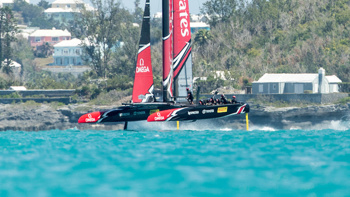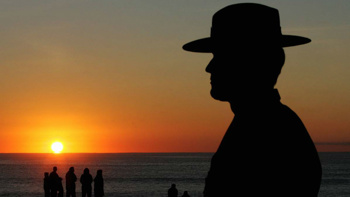Jonah Lomu dominated the sport of rugby union like no other player, the NZ Herald reports.
The on-field deeds of Lomu, who died today, captured the imagination of fans in all corners of the world during a 63-test career for the All Blacks.
Latterly off-field aspects of his private life and his on-going battle with kidney disease made for a fascinating human story which meant his name was never far from the news in New Zealand and overseas.
Standing 1.96m, weighing up to 120kg during parts of his career and clocked at under 11 seconds for the 100m, his fame wound up matching his outrageous physical gifts.
Lomu became the first New Zealand sportsman to become a multi-millionaire while remaining based in this country, putting his name next to lucrative global advertising deals.
At his peak, the giant left wing would routinely swat aside, trample over and sprint away from tacklers on his way to 37 test tries, currently the sixth most of any All Black.
He was released on unsuspecting opponents at the 1995 World Cup, scoring seven tries in spectacular fashion. His four in the semifinal against England - including one where he famously bulldozed fullback Mike Catt - are an abiding memory for many.
It was Lomu's performance at that tournament that elevated him to iconic status and which reputedly prompted broadcasting kingpin Rupert Murdoch to buy the television rights to rugby, kick-starting the professional age.
Born in Auckland to Tongan parents, Lomu spent the early part of his childhood in Tonga.
In his book Jonah My Story, Lomu recounted his difficult upbringing in South Auckland. He suffered abuse at the hands of his father Semisi and became involved in violent, streetkid activity at a young age, regularly caught up in minor altercations and incidents of theft.
A key moment in his life came when mother Hepi enrolled him at Wesley College, where Lomu learned about discipline and discovered his athletic frame was well suited to sport.
An outstanding age group track and field performer, Lomu's main love was rugby.
He played for the first 15 in the fourth form and it wasn't long before his uncanny talents saw him represent New Zealand schoolboy and age group teams at No 8.
He was noticed at the highest level via a televised national sevens tournament and just over a year later in 1994 became the youngest ever test All Black, against France aged 19 years, 45 days.
However, he failed to adjust to the positional requirements and didn't represent his country until the World Cup.
Such was his impact in South Africa, Lomu became the most recognisable figure in the game, a status he held for much of the next decade.
Yet he came perilously close to missing the tournament altogether, All Blacks coach Laurie Mains having despaired of getting him up to sufficient fitness levels. He had failed miserably to meet the high standards imposed at a punishing training camp early in the year.
Only after Lomu had been returned to sevens rugby where he came under the influence of fitness fanatic coach Gordon Tietjens did Mains and his selection colleagues decide to revise their plans.
In 1996 came the first sign of his health problems. Those plus an injury saw him miss the tests against the Springboks on the triumphant tour of South Africa.
Confirmation of his kidney condition, Nephrotic Syndrome, meant he missed most of the 1997 domestic season though he returned in time for the end of year tour of Wales, England and Ireland.
He achieved another distinction in 1998 when he won a gold medal as part of the sevens team at the Commonwealth Games in Kuala Lumpur.
In 1999 he was used for the All Blacks in domestic matches only from the bench as he struggled for his old majesty.
But at the World Cup he was as formidable as he had been in South Africa four years previously, finishing with a tournament-high eight tries, scoring a magnificent matchwinner against England in the pool match at Twickenham.
Lomu also scored two tries in the semifinal against France and was one of the few to emerge from that disaster with his reputation intact. Unlike many of his teammates, he graciously remained on the field after fulltime to congratulate the French.
Lomu remained in All Black squads up until 2002, even though form fluctuations returned and there were many periods when other talented outside backs like Christian Cullen, Jeff Wilson, Tana Umaga and Doug Howlett looked more dangerous.
Clearly battling for pace and confidence, Lomu dropped out in the early stages of the 2003 Super 12 and soon afterwards confirmed what many had suspected - his health problem had worsened.
He made a brave attempt to resume first class rugby with Wellington for the NPC season but it was soon clear that returning to top rugby was unrealistic.
He began undergoing kidney dialysis treatment in 2003, which affected his mobility because of the impact it had on nerves in his lower legs. Twelve months later he announced he needed a kidney transplant.
Considering his long battle with such a severe health handicap, it is remarkable that he achieved so much in his career. It explained why his form fluctuated so much throughout a glittering career.
In 2003 at the International Rugby Players Association's awards ceremony Lomu became just the third player to receive a Special Merit Award. He received standing ovations in shuffling public appearances at the World Cup in Sydney and as a guest speaker at the 2004 Halberg Awards.
Wellington radio personality Grant Kereama extended the giant wingers' quality of life when he donated a kidney to Lomu and on July 28, 2004 the transplant operation was successfully completed.
Lomu made a comeback to rugby in 2005 when he played in a Martin Johnson testimonial game at Twickenham in England.
The winger suffered a shoulder injury in the match though, which ruled out any chance of him playing in the NPC that season.
He had signed a two-year contract with North Harbour, which confirmed he would play rugby in New Zealand, but after he was injured he only was involved with the side in a coaching capacity.
Harbour gave him special clearance to play for the Cardiff Blues in the Celtic League in the 2005-2006 season and he racked up a handful of appearances for them, before a broken ankle cut his stint in Wales short.
Lomu finally did return to the playing field in New Zealand in 2006 when he played for Harbour in the NPC against Wellington and he said at the time it was "a dream come true".
Despite his return to the playing ranks, he was a shell of what he used to be on the field and although he harboured dreams of playing in a third World Cup in 2007 he wasn't offered a contract by a Super Rugby franchise for that season.
Various reports also linked him with a cross-code switch to rugby league as part of the Gold Coast Titans squad and a AUS$100,000 per year contract was tabled to him, but he didn't sign it due to the numerous commercial sponsors he had who had a strong alliance to rugby union.
Lomu officially retired from rugby in 2007, the same year he appeared on television show This is Your Life and was appointed as a Member of the New Zealand Order of Merit in the Queen's Birthday Honours list on June 4.
As he faded from the limelight in a playing sense he was splashed across women's magazines and newspapers again when it was announced in February, 2008 that he was divorcing from his second wife, Fiona.
He quickly moved in to a relationship with Nadene Quirk, who was married to Auckland rugby player Jarek Goebel, but they separated after she met Lomu.
The year of 2008 was another lucrative one for Lomu when he was unveiled as a Hall of Fame athlete for global sportswear giant adidas and was named their rugby ambassador.
The ambassador role put him alongside the likes of French footballer Zinedine Zidane and American tennis great Stan Smith on the very top tier of adidas' individual sponsorships.
Lomu was also a member of the Champions for Peace club, a group of 54 famous elite athletes committed to serving peace in the world through sport, created by Peace and Sport, a Monaco-based international organization.
Yet another rugby comeback took place in 2009 when Lomu linked up with French third division club Marseilles-Vitrolles, but that wasn't until after he proved his undeniable all-round sporting ability by competing in an amateur bodybuilding contest.
He even placed second in the over 90kg men's division and claimed a silver in the mixed pairs category.
The former rugby star said at the time he lost more than 30kgs to get on stage and photos of his bronzed physique were eagerly viewed across the world.
In 2011, Lomu was unveiled as one of the high-profile competitors for the charity boxing event Fight For Life, which was to pit past and present rugby union and league stars against each other in early December.
The big man was also on hand to play a role as part of the Rugby World Cup opening ceremony in Auckland in September.
Later that month though, details emerged of his declining health as his donated kidney began to fail him.
Lomu finished with more than 180 first class games in which he scored over 120 tries. He had 73 games in all for the All Blacks.
His mark of being the youngest player to appear in a test for New Zealand is likely to ever be beaten now considering the restrictions placed on teenage prodigies.
He is survived by his wife, Nadene and sons, Brayley (6) and Dhyreille (5).
Take your Radio, Podcasts and Music with you









